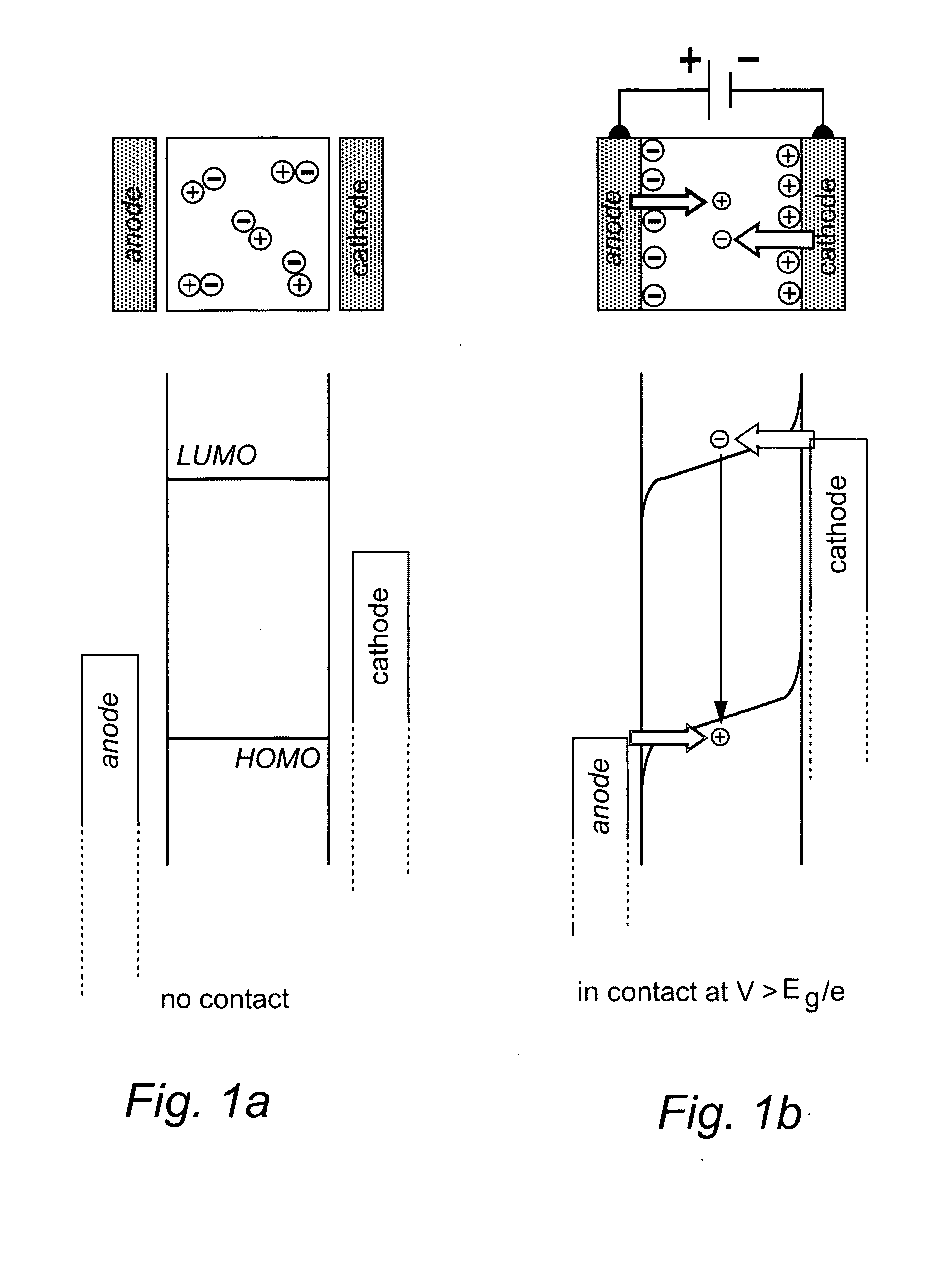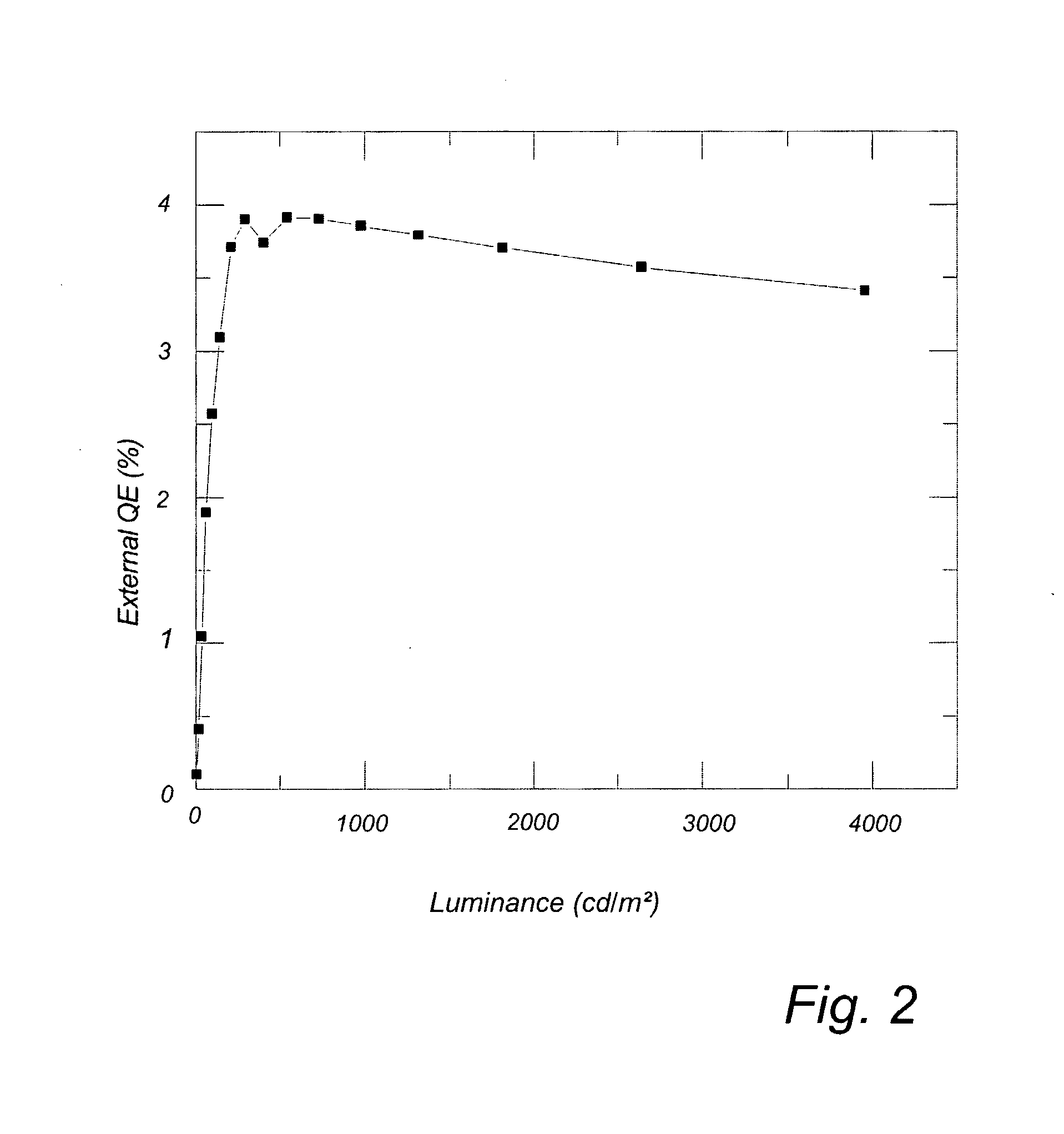Light-Emitting Electrochemical Cell
a technology of electrochemical cells and light-emitting electrodes, which is applied in the direction of electrochemical generators, natural mineral layered products, transportation and packaging, etc., can solve the problems of easy oxidation, shortening the life, and pled/oled devices for large-area lighting, and achieves high brightness and high efficiency.
- Summary
- Abstract
- Description
- Claims
- Application Information
AI Technical Summary
Benefits of technology
Problems solved by technology
Method used
Image
Examples
example 1
Synthesis of [Ir(ppy)2(phen)]+(PF6−)
[0064]Ir2Cl2(ppy)2 (0.123 mmol) and bathophenanthroline (0.194 mmol) were heated to reflux in a dichloromethane-methanol (3:1, 20 ml) solution under a nitrogen atmosphere for 3 hours. The volume of the solution was reduced to 5 ml and 10 ml methanol was added. An excess of saturated methanolic ammonium hexafluorophosphate was added. The resulting precipitate was filtered off and washed with ether (20 ml) to yield the desired product in 60-70%.
example 2
Synthesis of [Ir(ppy)2(phenSO3)]−Na+
[0065]Ir2CI2(ppy)2 (0.123 mmol) and bathophenanthroline disulfonic acid disodium salt hydrate (0.194 mmol) were heated to reflux in a chloroform-methanol (8:2, 20 ml) solution under a nitrogen atmosphere for 2 hours. The purification was achieved by gel-chromatography, using a silica column and 9:1 chloroform-methanol as eluent. The desired product was obtained in a 60-70% yield.
example 3
Preparation of a LEEC Comprising [Ir(ppy)2(bpy)]+(PF6−)
[0066][Ir(ppy)2(bpy)]+(PF6−) was prepared following literature (6). 59.93 mg of the complex was dissolved in 1.5 ml acetonitrile by stirring at 50° C. for 30 min. To this solution was added 0.8 ml of a 25 mg / ml solution of PMMA in acetonitrile. By this way the weight ratio [Ir(ppy)2(bpy)]+(PF6−): PMMA in the mixture became 3:1. The solution was stirred at 45° C. for 30 min.
[0067]Next, molecular sieves were added in order to remove traces of water. The solution was brought into a nitrogen atmosphere glovebox, where all subsequent processing was carried out. After 30 min. the solution was filtrated and spincoated on glass substrates with structured ITO, which had been thoroughly cleaned beforehand using soap, water, isopropanol, ultrasound and UV-ozone. This resulted in homogeneous films of 100-200 nm thick.
[0068]The films were dried at 100° C. in nitrogen for about 1 hour. A 100 nm thick Ag electrode was evaporated on top in a va...
PUM
| Property | Measurement | Unit |
|---|---|---|
| luminance | aaaaa | aaaaa |
| luminance | aaaaa | aaaaa |
| external quantum efficiency | aaaaa | aaaaa |
Abstract
Description
Claims
Application Information
 Login to View More
Login to View More - R&D
- Intellectual Property
- Life Sciences
- Materials
- Tech Scout
- Unparalleled Data Quality
- Higher Quality Content
- 60% Fewer Hallucinations
Browse by: Latest US Patents, China's latest patents, Technical Efficacy Thesaurus, Application Domain, Technology Topic, Popular Technical Reports.
© 2025 PatSnap. All rights reserved.Legal|Privacy policy|Modern Slavery Act Transparency Statement|Sitemap|About US| Contact US: help@patsnap.com



